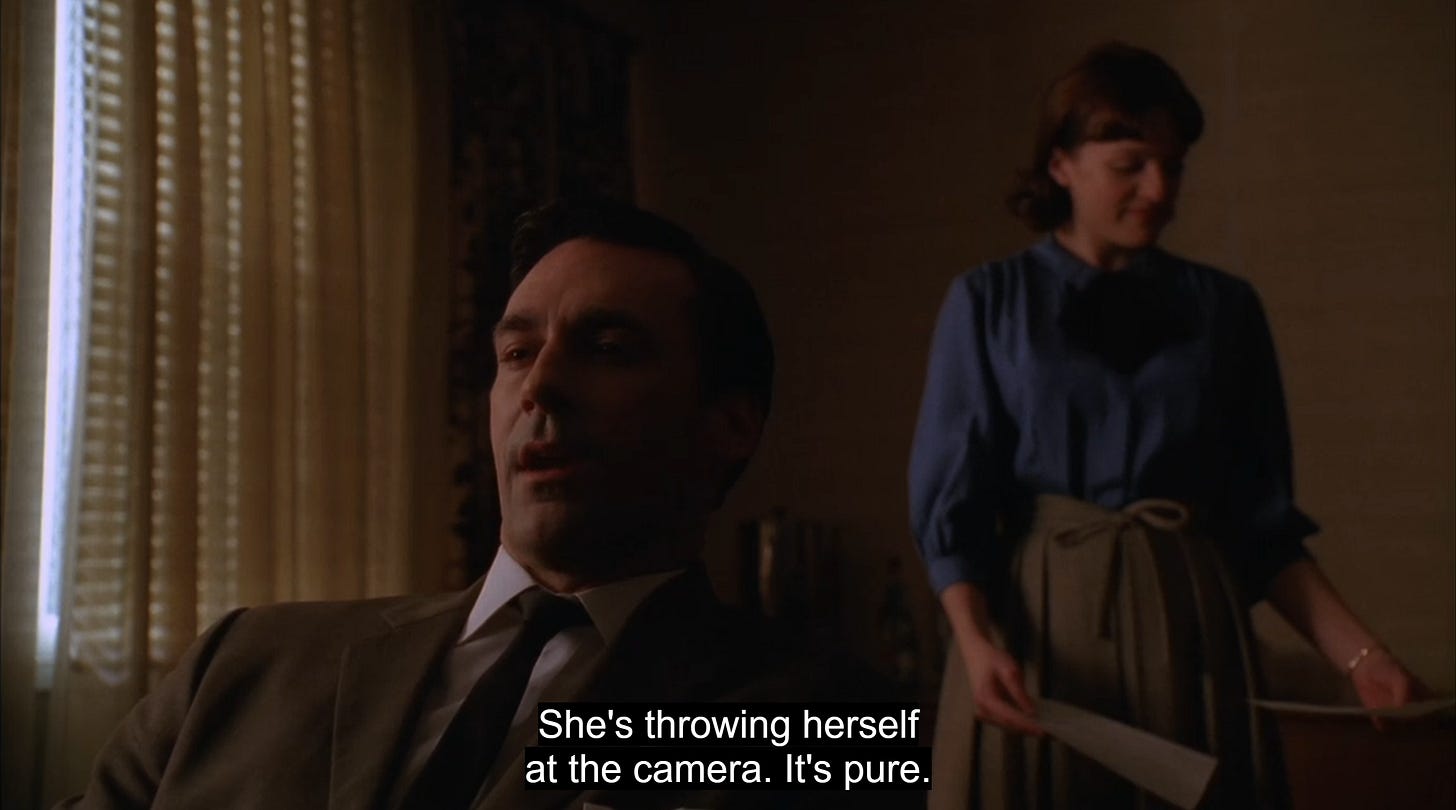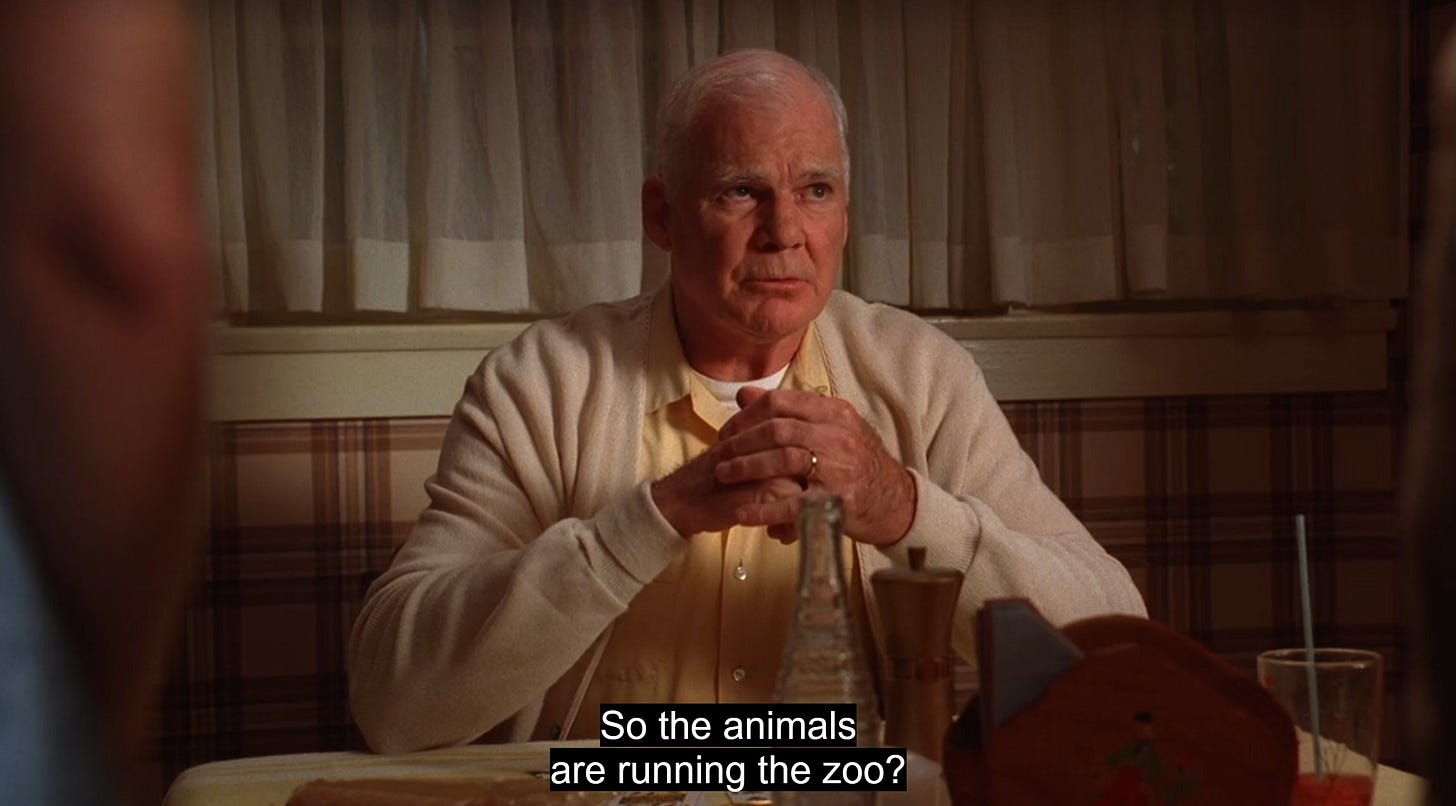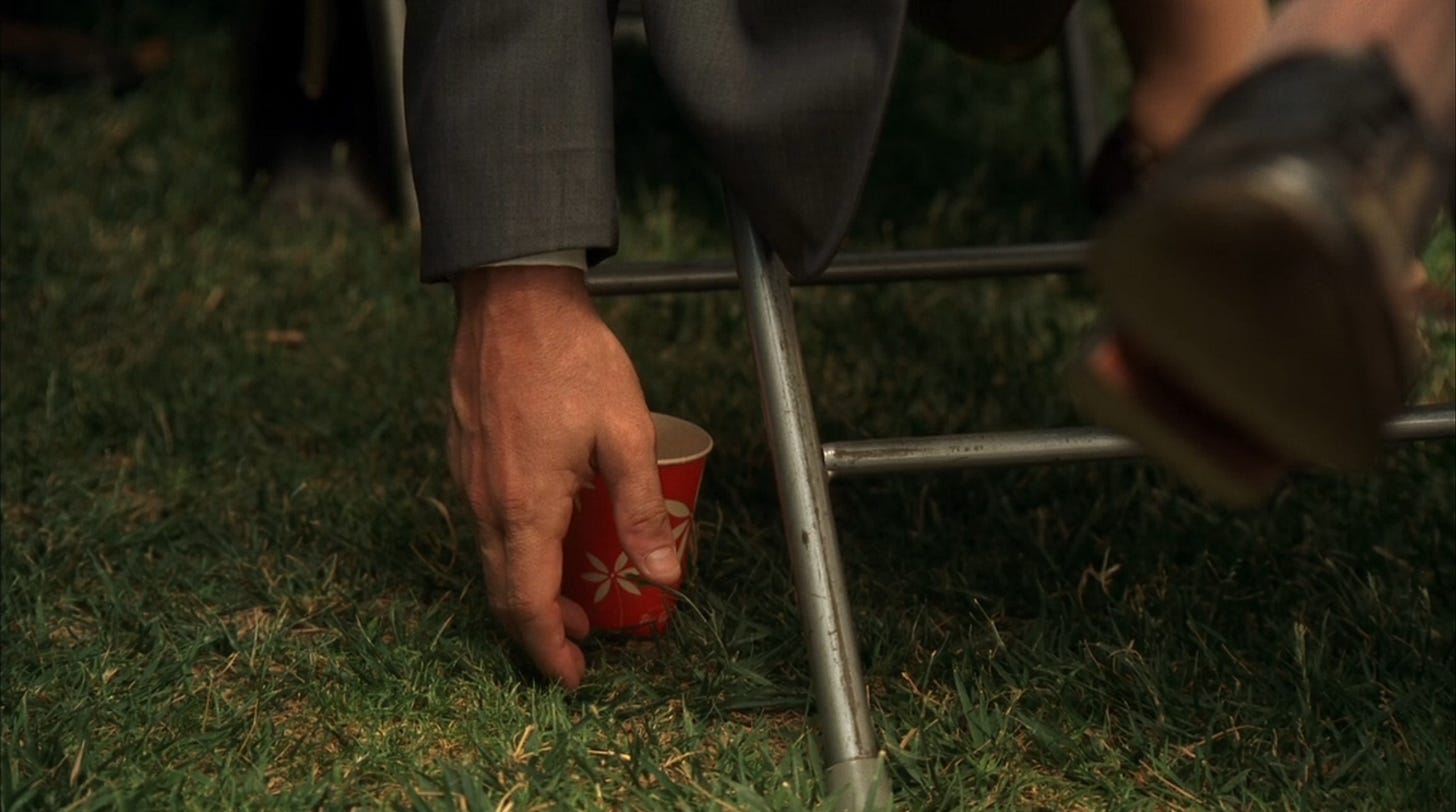Season 3: Episode 2
“Love Among the Ruins”
Written by Cathryn Humphries & Matthew Weiner
Directed by Lesli Linka Glatter
Setting: May 1963
Something that comes with being a fan of Mad Men is that you want to experience the same history and moments that the characters do. I put on 1960s election coverage for fun some afternoons and at this week’s Chicago Mad Men trivia night, we all gathered to watch CBS’ broadcast of the Apollo 11 landing. It was an incredible experience to share a room with people applauding as man set foot on the Moon.
After first hearing that the 1963 musical film Bye Bye Birdie was featured prominently in Mad Men, I thought, “I know what I’m doing before I start Season 3!”
Bye Bye Birdie is a beloved musical that many enjoy but… I do not care for it. It was grating and annoying and if Don Draper saw it as a play without any cinematic elements then his soul would leave his body.

As a movie, the intro song is cinematic and iconic and that is what stays with you. Spike Lee attributed Ann-Margret’s iconic opening that directly acknowledges the camera to his own POV/4th wall breaking style in Do the Right Thing (1989). Bye Bye Birdie’s opening grabs viewers because:
It is catchy even for those that are annoyed by it.
It is cinematic.
Ann-Margret is a beautiful woman who is looking directly through the celluloid and out at you.
This last point is key because Peggy from the first meeting sees why a Patio Cola ad imitating the film’s opening will fail. The ad is being decided by men who saw the film and were attracted to Ann-Margret. They like the idea of recreating a beautiful woman like her to be in their ad. Patio Cola is marketed to women as a diet drink and an ad built around the male gaze does nothing to communicate that, no matter how hard Sterling Cooper is going to try.
Patio Cola’s “Bye Bye Sugar” ad is a commentary on Mad Men itself, a show that was sold on sex appeal. It is holding a mirror to viewers who objectify the characters just as the men watching Bye Bye Birdie do Ann-Margret. It begs you to look deeper into a show, movie, or any work of art beyond a beautiful exterior. A surface level life will look good to others but never make you happy.
In contrast, the other major deal of the episode is the construction Madison Square Garden which is going to replace historic Penn Station. Paul Kinsey is furious and his potential clients know it. The outburst ended up being merely performative as his paycheck depends on no direct action. Kinsey’s main argument boils down to Penn Station being old and historic. He believes that what makes NYC unique will be destroyed by what is new.
The destruction of Penn Station led to new reforms in landmark laws and the preservation of historic places. I support the preservation of historic landmarks but Kinsey’s argument fails in part because he talking to men who are brick walls and because it is delivered selfishly under this persona of righteousness. Kinsey wants to be able to tell people what kind of marble is used in Penn Station and what year it was opened. He likes this building because it is old and it makes him feel unique in a present that he does not care for. It is an extension of his own uniqueness.
This again points a mirror back at the audience for why they are watching the show.
Is it the sex?
Is it the history?
Viewers are in love with the ruins of a world that, like Penn Station, does not exist anymore.
Penn Station’s destruction is an inevitability just like another event coming in November.
That’s right, Jane’s Sterling’s wedding. I touched on this in the last episode recap but a key difference between this season and Season 2 is that things are going to come to a end in 1963. There is no more limbo. Destiny is set, we know that John F. Kennedy will die.
The Patio Cola ad is doomed.
Don and Betty’s marriage is doomed.
And Grandpa Gene is in his final year. I don’t believe anyone watched this episode expecting him to last out the season. One of Don’s strengths comes in accepting the harsh facts of life. He’s not so good at picking up a cake for his daughter’s birthday but when there is death or hardship, his humanity can show. Don does not care for Grandpa Gene but knows that taking him into their home as his health continues to deteriorate is what has to be done.
He also hopes that sympathy towards her father will continue to mend his marriage with Betty.
“Love Among the Ruins” is about being wanted. Even those who say they love him like Betty’s brother William feel that Grandpa Gene is a burden. It takes Don the ad man to sell the idea of what to do with a mentally unwell, old man. This brings no happiness but it does bring tomorrow. Gene doesn’t have many tomorrows left. For his granddaughter Sally, each tomorrow she spends with him matters.
If only Don had brought this approach to all of his life, family comes first.
Peggy experiences a different want as she questions her desirability. Her criticism of a the Patio Cola ad comes with a haunting feeling that a pretty face like Ann-Margert matters more to her industry than a good pitch from her. Peggy also wants to feel beautiful. After the trauma of her child’s unexpected birth and a couple years prioritizing work above all else, Peggy yearns to be a young and desirable woman in her 20s.
She has a one-night stand with a particularly unmemorable guy who she cannot even hear at the loud bar they meet in. The conversation never mattered, she only did this to prove that she can be wanted. Peggy treats the one-night stand like a work transaction, she leaves once the deal has been made. A good work-life balance comes from desiring more than just work and Peggy does not have that right now. She criticizes Ann-Margret at work and then tries to be her at home.
If her ideas aren’t wanted in the office then she is pushed to prove to herself that she is wanted outside of it.
These characters yearn for realities that do not exist and the present is pushing back as they try to rebuild the ruins of a past that cannot last.
The episode end with the Drapers attending a Maypole celebration held by Sally’s elementary school. A fun event for the kids becomes a living dream for Don as he lusts after her teacher. It isn’t just that Suzanne Farrell is a beautiful woman. By watching her dance in old garb with bare feet pressing into the grass, Don can escape into a simple past. In this past, life revolves around the seasons and women dance. That is all he knows.
Our idea of the past is never quite real because we look at it through a modern lens. Feelings of the present and personal beliefs shape our view of times where people felt all of the same emotions that we do in the present.
Are we seeing a beautiful facade or the whole picture?
The episode opens and ends with a beautiful woman performing in song and dance. Men see and desire her.
It is a great fault to believe that fantasy can be reality if you want it enough. That isn’t following a dream, that’s distorting real life.
Above all else, Bye Bye Birdie teaches you how to say goodbye to the past.
In Mad Men, 1963 is about saying goodbye to fantasy and the reality we knew.












